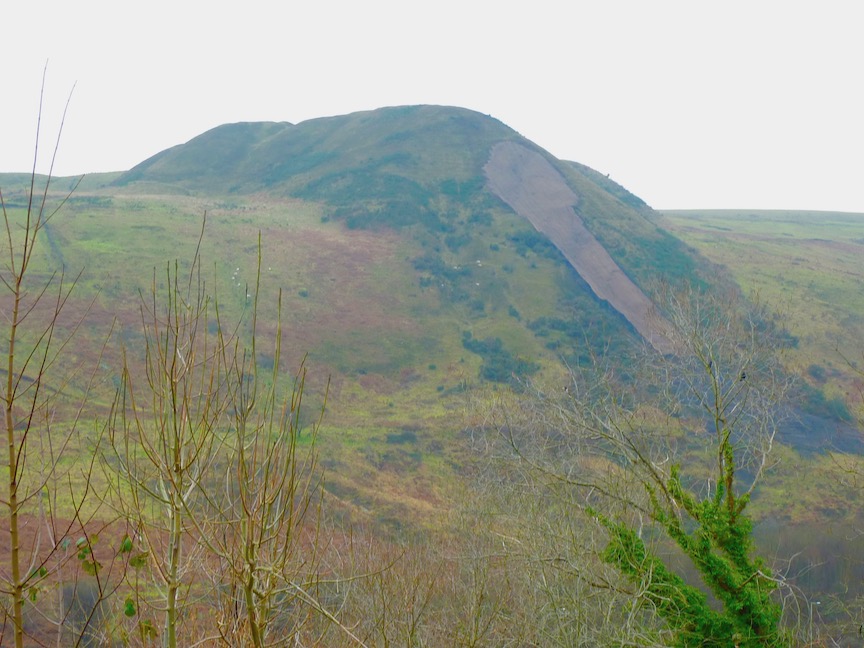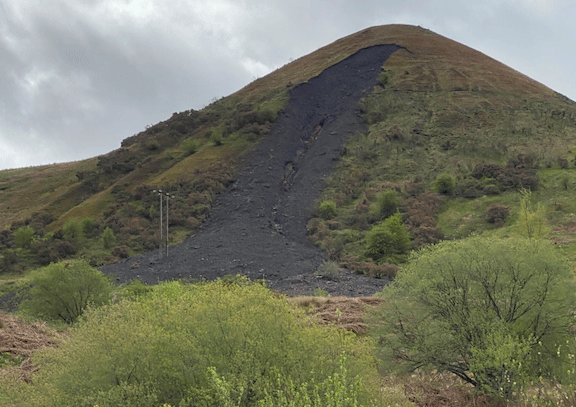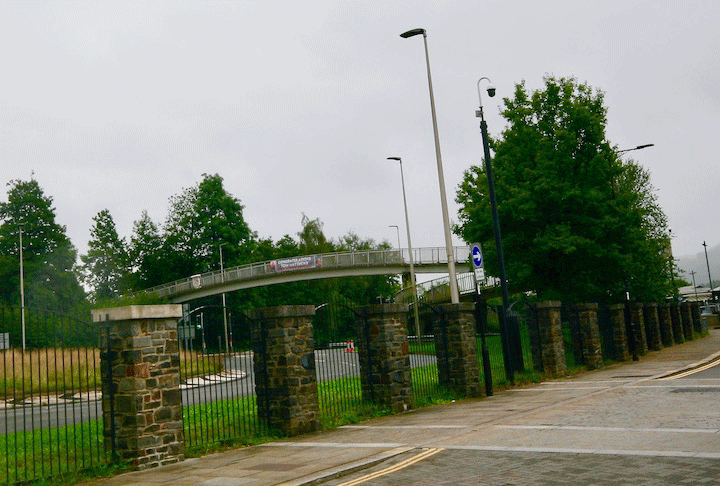Rhondda Cynon Taf Council have a meeting today 27 January on Coal Tip Safety. Questions put to the council since 2020 Residents need answers

Rhondda Cynon Taf Council Environmental Services Scrutiny Committee 14th July 2014 a report from the group director, Environmental Service, The report advises on the current progress since gaining cabinet approval on 22 February 2010 to progress the Albion scheme and provide a general update on the land reclamation program. It was noted in the report that Lack of Welsh Government funding for future Land Reclamation.
RCTC Appendix C – Summary of Reclamation Schemes required on 14th July 2014
Tylorstown & Llanwonno Tips NSA27 Tylorstown Prelim Design – No funding
Craig yr Duffryn Tip NSA27 Tip with stability Issues Prelim Design – No funding.
Cefn Pennar Tip NSA27 Tip with Drainage Issues Prelim Design – No funding.
Four years later in 2015 The Coal Authority (CA) introduced a Five Year Plan the CA being part of the British Government said in its 2015 report:
“We place great importance on innovation as we seek to minimize the demand on public finance for the legacy liability of mining”.
Historical problems with coal mining in South Wales dangerous spoil tips still exist, therefore the CA and British Government need to place great importance on the demand on public finance for the legacy liability of mining?
What happened to the 5-year plan in Rhondda Cynon Taf to maintain or remove the historical problems with coal tips? There was no funding available in 2014 so nothing was done and that was just one of the reasons why 60,000 tons of spoil collapsed from an unstable coal tip in Tylorstown Rhondda a coal tip known for stability Issues.
Where was the 5-year plan The Coal Authority implemented in Rhondda Cynon Taf what was it used for? That is a question for the RCT Council and the Welsh Government to answer?
Rhondda Cynon Taf Council Cabinet will hold a meeting on 27 January 2022 where members will consider a report and proposals to set up its own team to manage former coal tips in the area.
The purpose of the report is to seek approval to establish a Tip Safety Management Team within Frontline Services which would focus all current elements of spoil tip safety, including regulatory, management and maintenance into a single dedicated Tip Safety Management Team.
The question is why has the council waited until now when RCT has the most dangerous coal tips, there are 303 coal tips in total in RCT. In 2015 The Coal Authority was supposedly monitoring how climate change could impact on spoil heaps in South Wales reporting they had installed weather and telemetry a process of recording and transmitting the readings of an instrument, flow monitoring at strategic locations in South Wales. Will RCT Council inform the public if any of the flow monitoring stations were set up in RCT and the locations?
Residents who live in the shadows of historical coal tips in RCT say they are apprehensive when heavy rain is forecast, climate change has demonstrated their apprehensions are proven correct, the only way to guarantee safety is removing the problem completely.
The council says they have a major program of tip maintenance, in the meeting, tomorrow will the council guarantee the publication of the program of works related to coal tips? The resident would like to know where and what coal tips have priority, if they have a program they have a start date for each coal tip that requires attention.
Placing sticking plasters on historical coal tips is not a long-term solution to climate change and a risk to the public, the coal owners of the past dumped waste on Welsh hillsides and the British Government through the National Coal Board were also happy to dump colliery spoil from 1947 to 1987 because they were making money. Now the coal tips require removal on a point of safety because of climate change Central Government the NCB now The Coal Authority show little interest.
The landslide in Tylertown and others in the Rhondda was a wakeup call again for all the Public Bodies responsible just like the Aberfan disaster, the commitment stopped a few years after that tragedy, let's hope the obligation to public safety is a long term commitment even when it’s attraction is out of the media.
RHONDDA CYNON TAF COUNTY BOROUGH COUNCIL CABINET MEETING
The Meeting to be held on 27 January 2022
TIP SAFETY MANAGEMENT RESOURCES REPORT OF DIRECTOR – FRONTLINE SERVICES IN DISCUSSIONS WITH THE RELEVANT PORTFOLIO HOLDER, THE LEADER OF THE COUNCIL, CLLR ANDREW MORGAN
Author: Roger Waters, Director – Frontline Services
1. PURPOSE OF THE REPORT
1.1 The purpose of the report is to seek approval to establish a Tip Safety
Management Team within Frontline Services which would focus all current elements of spoil tip safety, including regulatory, management and maintenance into a single dedicated Tip Safety Management Team.
2. RECOMMENDATIONS
2.1 Cabinet is recommended to;
2.2 Agree to the establishment of a dedicated Tip Safety Management Team within Frontline Services to;
Manage the Council’s responsibilities under the Mines and Quarries (Tips) Act 1969,
Manage the Council’s safety responsibilities as a land-owner of a significant amount of coal spoil tips across RCT.
3. REASONS FOR RECOMMENDATIONS
3.1 There are a significant number of Coal Spoil Tips within the geographical area of RCT. The total number exceeds 340, of which over 70 are owned or part-owned by RCT.
3.2 In recent years there have been a number of slips to coal tips, namely at;
Tylorstown – February 2020 (Storm Dennis)
Wattstown Standard – December 2020
3.3 It is widely acknowledged that the risk associated with coal spoil tips has increased as a result of climate change and its impact on the intensity and frequency of storm events.
3.4 The slip events referred to above have been widely publicised, raising significant concerns with the public and generating substantial media coverage. In parallel, Welsh and UK Governments have collectively established a series of Tip Summits, with the Welsh Government driving forward a review of Coal Tip Safety in Wales in conjunction with the local authorities and The Coal Authority and providing funding and resources to support enhanced levels of inspections, maintenance, monitoring equipment and capital works.
3.5 RCT has been heavily involved with the Coal Tips Safety Group established by Welsh Government and has also benefitted significantly from the funding and resources that have been made available to manage the liabilities associated with these legacy assets.
3.6 The recent WG budget announcement sees further commitments from WG towards dealing with the liabilities from these legacy assets. Arguably RCT has the largest proportion of ongoing risk associated with these tips. It is therefore appropriate to review the level of resourcing involved in discharging our duties as regulators and owners, and in anticipation of a significant forward programme of capital investment targeted at reducing the risks posed to our communities and our infrastructure.
4. BACKGROUND
4.1 The historic position in RCT is that the responsibility for undertaking the regulatory role contained within the Mines and Quarries (Tips) Act 1969 resides within the Flood Risk and Tips Management Team within Frontline Services. Responsibilities for Council owned tips, as landowner, has rested with Corporate Estates.
4.2 Since Storm Dennis, capital investment in tip safety together with a major programme of tip maintenance, all funded by WG grant, has been delivered by the Council’s new Head of Infrastructure Asset Management, utilising a combination of existing staff, consultants, seconded specialists and The Coal Authority.
4.3 This has allowed the Flood Risk and Tip Management Team to focus more exclusively on the increasing demands of Flood Risk Management – the enormous scale of which has been well documented in other Cabinet and Scrutiny reports.
4.4 Integrating the tip safety aspects of the Council’s responsibilities as land-owner with its responsibilities under the “Tips Act” provides a focal point for all tip safety issues and enables a dedicated team to be established to discharge these duties effectively.
5. PROPOSED WAY FORWARD
5.1 It is proposed to establish a dedicated Tip Safety Management Team which will report to the Council’s Head of Infrastructure Asset Management within Frontline Services.
5.2 On establishment, the current Flood Risk and Tip Safety team will become the Flood Risk Management Team with job titles adjusted accordingly.
5.3 The Team will comprise of;
GR15 Tip Safety Manager
GR13 Principal Tip Safety Engineer
GR11 – Assistant Engineer
GR8 – 2 nr inspectors
GR6 – Technician
5.4 Market supplements may be required to attract the right candidates into the senior roles.
5.5 The team will be required to deliver a multi-million pound capital programme of tip safety works, together with scheduled and exceptional tip maintenance works. These works will be identified by a comprehensive programme of inspections and increasingly supported by the continued roll-out of the latest technological advancements in tip management and monitoring equipment and techniques. The team will also contribute to engagement and collaboration with the Welsh Government Tip Safety team and The Coal Authority.
5.6 The Team will also engage with private tip owners and, subject to grant availability or recharge, manage major capital or maintenance works on third party land.
5.7 They will also work towards delivering warning and informing systems and processes with the Council’s Emergency Planning Team to mitigate risks of future incidents.
5.8 As the team becomes established, opportunities to develop graduates and apprentices in establishing a centre of excellence will be encouraged.
5.9 It is not proposed that the new team will take over the role currently fulfilled by Corporate Estates i.e. leasing of land, protection of boundary fence works, etc, with that function remaining with Corporate Estates together with the requisite budget. It is anticipated that there will be close working between the two areas.
6. EQUALITY AND DIVERSITY IMPLICATIONS
6.1 An Equality Impact Assessment screening form has been prepared for the purpose of this report. It has been found that a full report is not required. There are no adverse equality or diversity implications associated with this report.
7. FINANCIAL IMPLICATION(S)
7.1 The gross cost of the staff structure set out in 5.2 is £263k, plus market supplements (where appropriate) per annum.
7.2 There will be a need to have a revenue budget for the team to ensure that the maintenance of the tips can be undertaken regardless of availability of capital monies / grant. It is envisaged that a yearly revenue budget of £200k will be required to undertake the maintenance of the tips including devegetation, cleaning and repairing drainage channels, repair of drainage structures, minor repairs of localised slips, scour, etc.
7.3 Due to the inaccessibility of the sites in question and the need to drive vehicles onto the sites, 2 number 4×4 vehicles will be required to be purchased for use by the inspectors undertaking the tip inspections.
Purchase cost of the vehicles is estimated at £60k for the two.
7.4 A further annual revenue budget of £26k per annum would be required for ongoing costs including vehicle running costs, ICT costs, monitoring equipment and ppe.
7.5 The total costs are estimated at £489k per year plus any market supplements.
7.6 The opportunity to fund these ongoing costs (including vehicles) from grant funding sources will continue to be maximised, as part of the substantial capital programme which is being delivered. The revenue maintenance costs are currently being funded by WG and we will continue to seek to ensure continuation of these arrangements going forward, notwithstanding there is no guarantee of this arrangement being permanised. As a transitionary arrangement the Council will need to underwrite and accept the risk of permanent funding not being secured. Any costs which cannot be funded by WG / external funding sources will be funded from, initially, one off resources.
8. LEGAL IMPLICATIONS OR LEGISLATION CONSIDERED
8.1 Local Authorities have regulatory and land-owner responsibilities under the Mines and Quarries (Tips) Act 1969.
8.2 This legislation is no longer fit for purpose and WG has commissioned a review which has been carried out by the Law Commission. The report of the Law Commission is awaited. It will then be a matter for the Welsh Government to consider whether they wish to take forward new legislation on Coal Spoil Tips for Wales.
9. LINKS TO THE CORPORATE AND NATIONAL PRIORITIES AND THE WELL-BEING OF FUTURE GENERATIONS ACT
9.1 The proposal supports the Council’s Corporate Plan priorities for; Place – Creating neighbourhoods where people are proud to live and Economy – Building a strong economy. The presence of these legacy assets represents a threat to community safety and wellbeing.
9.2 The establishment of a dedicated team to deal with Tip Safety and to deliver a comprehensive programme of tip safety works will improve the resilience of our physical infrastructure and reassure our communities that any risk is being effectively managed and reduced.
9.3 The capital programmes will generate jobs in the locality and enhance the landscape/remove potential barriers to private investment.
9.4 This is in turn supports the seven well-being goals of the Well-being of
Future Generations (Wales) Act 2015. This proposal contributes to the
Well-being Goals and is consistent with the five ways of working, as
defined within the sustainable development principle in the Act.
10. CONCLUSION
10.1 RCT is host to one of the highest incidences of coal spoil tips in Wales, together with one of the highest risks of tip instability associated with increasing climate change threats.
10.2 The proposal to establish a dedicated Tip Safety Management Team to manage these risks is both necessary and proportionate if the Council is to discharge its duties and responsibilities effectively in order to protect our communities
History repeating itself 1939 1966 2020
The 1939 slide at Abercynon has been described as a flow slide.
On 5 December 1939, after heavy rain, 180 000 tons of the tip suddenly slid downhill.
It swept across and blocked a trunk road, the A470 in Taff Vale, a railway, a canal, the River Taff and a municipal sewage farm on the other bank. It travelled about 0.6 km. No one was injured. A mining consultant, Mr Brynmor Davies, saw the slide a few days later and described as having been a flow slide. The material did not seem particularly wet and the slide had travelled over the grassy surface.
DISCUSSION. COLLIERY SPOIL TIPS – AFTER ABERFAN. (ORIGINAL PAPER PUBLISHED AS A SEPARATE DOCUMENT – LOAN COPIES AT 7598).
Authors:
MCKECHNIE THOMPSON, SIR H HARDING, JT FINEY, PR VAUGHAN, WR BRIGGS, RL BROWN, S RODIN, NJ COCHRANE, AW BISHOP, JD HUMPHREYS, PK DEE, CD CROSTHWAITE, PG WEEKET, AM MUIR WOOD, RK TAYLOR, BO CORBETT, ARM
https://doi.org/10.1680/iicep.1973.4702
Published Online: June 17, 2015




